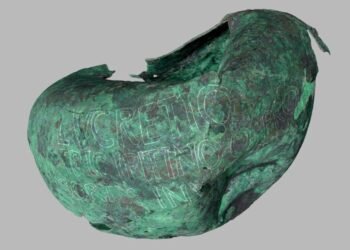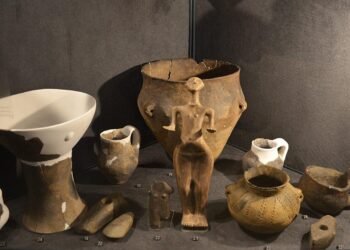A set of prehistoric wooden spears found over two decades ago in Schöningen, Germany—then estimated to be between 300,000 and 400,000 years old—may be as young as 200,000 years old, according to new research published in Science Advances. This revised timeline means that the weapons were not created by Homo heidelbergensis, as previously believed, but by Neanderthals, offering new evidence about the cognitive and social complexity of our closest extinct relatives.

The wooden spears, made of spruce and pine, were originally discovered in the 1990s at a lignite coal mine along with the remains of nearly 50 wild horses. Their excellent state of preservation earned the Schöningen 13II-4 site the distinction of being the location of the most well-preserved Paleolithic wooden hunting weapons ever found. As a result of the first sediment analysis, archaeologists had put the age of the artifacts at around 400,000 years, which aligned them with H. heidelbergensis, a possible common ancestor of modern humans and Neanderthals.
However, progress in dating has now undermined such an assumption. Archaeologist Kirsty Penkman of the University of York headed a team that applied amino acid geochronology to fossilized freshwater snail shells found in the same layer as the spears. Their analysis yielded an age of around 200,000 years. Dating the spears places them in the Middle Paleolithic era—a period linked with emerging behavioral complexity in Neanderthal populations.
Olaf Jöris of the Leibniz Center for Archaeology and co-author of the study said that Schöningen was remarkable because the objects were preserved so well, and because their age didn’t match with anything else. The new age, he argues, solves these contradictions and places the site within a growing body of evidence showing a shift toward group-based hunting strategies and social cooperation in Neanderthals during this period.

The spears themselves show a remarkable level of craftsmanship, suggesting that their makers were not only skilled at woodworking but also had the cognitive ability for long-term planning and coordination.
The location of the site near a lake and the density of the horse remains have led scientists to believe that Neanderthals may have driven animals toward the edge of the lake to gather and kill them more efficiently. Such a coordinated group hunt implies far greater social complexity and communication capability than had previously been assumed to be Neanderthal capabilities.
Though the find opens up new doors in what we understand about Neanderthals, not all scientists are convinced. But if the new timeline is correct, the Schöningen spears offer compelling evidence that Neanderthals were not the brutish loners of early scientific portrayals. Instead, they may have been innovative, social hunters with advanced toolmaking and social strategies—behaviors that move them closer and closer to our modern human ancestors.























Disclaimer: This website is a science-focused magazine that welcomes both academic and non-academic audiences. Comments are written by users and may include personal opinions or unverified claims. They do not necessarily reflect the views of our editorial team or rely on scientific evidence.
Comment Policy: We kindly ask all commenters to engage respectfully. Comments that contain offensive, insulting, degrading, discriminatory, or racist content will be automatically removed.